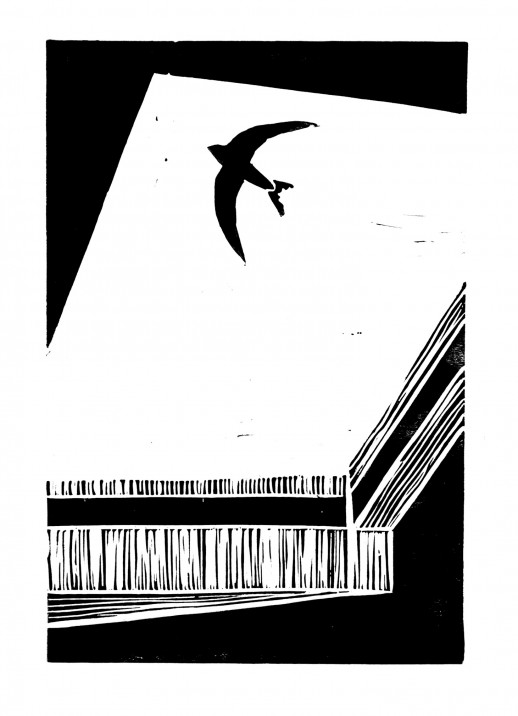Ahead of the forthcoming publication, we have an exclusive extract with artwork from Rob Cowen’s Common Ground.
NEW YEAR’S EVE
Maps transform us. They make birds of us all. They reveal the patterns of our existence and unlock our cages. If it wasn’t for that map, a second-hand Ordnance Survey given as a Christmas present, maybe none of this would have happened. It was New Year’s Eve and I lay on the bed with the town unfolded before me. I felt tired; constrained; racked with cabin fever. I needed to get out. From a circle of Biro drawn around my new house I flew up and over the unfamiliar rooftops and roads, past shops, schools, hair salons and bookmakers, seeking the nearest open ground. Below me suburbia slunk down a shallow hill towards an endless patchwork of delineated farmland. Hemmed in between the two, I saw it: a tract of white paper, tree symbols and the varicose vein of a river. It lured me down, eyes to paper, body to freezing earth.
Somewhere a bell struck five as I cut through the start-stop traffic of the ring road. Exhaust fumes swirled fog-like, landlocked by the plummeting temperature. Underfoot the afternoon rain was hardening into a slippery film; frost feathered lawns. That peculiar post-Christmas malaise, thick with burning coal, pressed down on the houses. As the shrivelled sun disappeared into the mass of pitched roofs, chimney stacks and telegraph wires, I flowed on past a plastic Santa on a roof with no chimney and along a trench of emerging streetlights. Either side of me, rows of Victorian terraces morphed into post-war semis before, finally, modern red-brick boxes whirled off the road in car-cluttered cul-de-sacs. Then, after a mile of walking, even their low walls and privet hedges began to thin. Through the gaps the dark, dank countryside of northern England rose like a great black wave.
At the bottom of the hill a rough track bisected the road suddenly and steadfastly, tracing a contour with nineteenth-century arrogance. It was a definitive border. Light and vegetation were in accord. Dimness shrouded the land beyond. Among the bare blackthorn, ash and spider-limbed elder, I spied relics: soot-blackened sandstone walls, riveted iron plates and the overgrown ditch and mound of a siding. It all uttered a single word: railway. A footstep and I had crossed from the bright lights and right angles of bulbs and bricks into black bushes and trees, whose infinitesimal branches overlapped the track like hair growing over a scar. Unwittingly the railway was fulfilling a different function now – this was the high water mark of the sprawl. Suburbia washed against its southern bank in a mass of rickety fences and scattered bin bags disembowelled by brambles. Down its northern side the town dissolved into something other: a kind of wildness. Winter-beaten meadows stretched into wood before the earth rose again as field and hill that met sky in an unbroken ridge.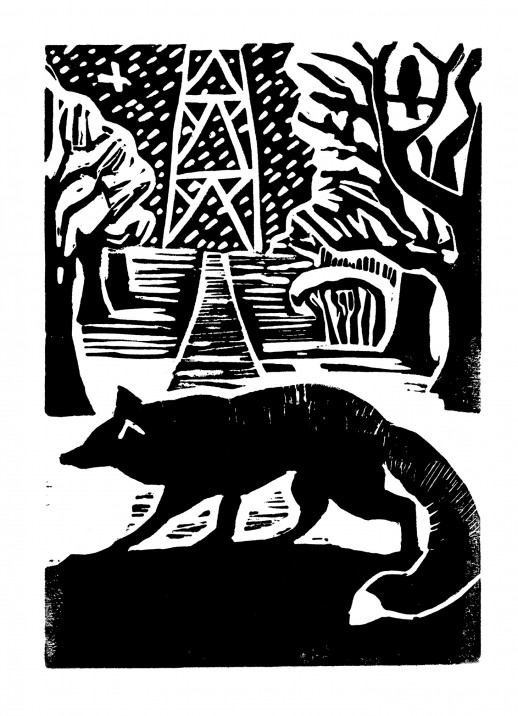
I hunkered down by a fence and tried to take it all in. Nothing stirred. There were hints of shapes forming in the distance – stands of larch, pylons, barns – but they were impossible to distinguish. The road I’d followed narrowed and wandered past a squat pub crouching in a hollow, then became lost in the rawness of fields. Tarmac turned to footpath, footpath into soil. Marking the border on opposite sides of the road were two vast oaks thirty metres high. Entwined above me their limbs created an arch, ancient sentinels guarding a forgotten world. I knew it, though. The urban fringe. The no man’s land between town and country; this was the edge of things.
I can’t say what imperceptible force drew me there, only that I needed to reach it. That frontier called me. Maybe a speck of its soil carried in a starling’s foot had been drawn down deep into my respiratory system, circulating around my bloodstream and lodging on my temporal lobes, establishing itself as a point of reckoning. Whatever it was, I felt a sense of returning, like a bee to a hive. Weeks had passed since I’d left London with the weightlessness of new horizons in Yorkshire, the place I’d grown up, but far from being the liberating experience I’d imagined, moving house had proved to be an imprisonment. For too long I’d been stuck in an unending cycle of working, painting walls and unpacking boxes, sleeping fitfully in rooms that stank of gloss, acid in my throat, numbed by the cold of open windows. I’d find a whole day had slipped by as I sifted through collections of things that suddenly seemed to belong to a previous life. I’d hardly ventured into the world outside. Soon the shortening days and wintry gloom made familiarising myself with new surroundings even harder. All my routines were jumbled; every light switch was in the wrong place. In truth, the act of handing over the keys to my London flat had signified a greater shift: present to past. All the maps I had once navigated my life by – the routes to work, streets, cafeěs, flats, parks and pubs – were redundant. They covered a region 220 miles to the south. I was stuck somewhere else, between tenses, between spaces, between lives.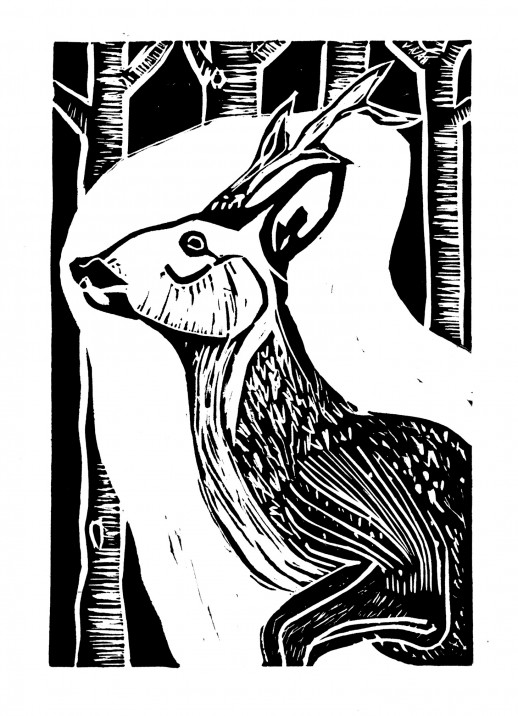
Everything changes continuously, of course, nature is perpetual flux, but we are good at suppressing uncomfortable reminders of the greater cycles. We rope ourselves to imagined, controllable permanence. Clocks are wound to the rhythms of modern anthropocentric existence: the nine-to-five grind, career trajectories, the working week, Saturday nights out, summer holidays, twenty-five-year mortgages, pension plans, retirement. It’s how the adverts metronome our lives. Yet staring out over that edge rendered such things irrelevant. Time was a different animal, indifferent, a deer running unseen through the trees. There was nothing by which I might measure the moments passing until the rise and fall of a siren shrieked through town, then silence again. With the cold, clear, descending dark came euphoria; it prickled my neck and released the atom-deep sensation of otherworldliness. It was the blur of joy and terror felt when facing something prior to and greater than the self. My pulse slowed as the adrenalin dispersed and for a second I imagined it was my cells recalibrating to the deeper rhythms of the dark, my body resetting to the land.
Resetting is the right word, for I have long loved the edges. As a boy I would jump the fences around my home town to walk and play in the scrubby penumbra between the urban and rural. I remember snapshots: watching badger setts at night above lagoons of amber-lit houses; seeing a grass snake slide past my single-buckle school sandal; catching the sapphire flash of kingfishers as cars droned over a road bridge above. Those seams were wide, exotic kingdoms possessing a kind of condensed wildness precisely because of their proximity to the civilised. A feeling of being alive and in the moment used to fill me when watching the unfurling of leaves in spring or the dying back of bracken in autumn. For a boy growing up in 1980s Britain, such things provided a vital counterpoint to the increasingly fabricated reality of classrooms, kitchen tables and TV.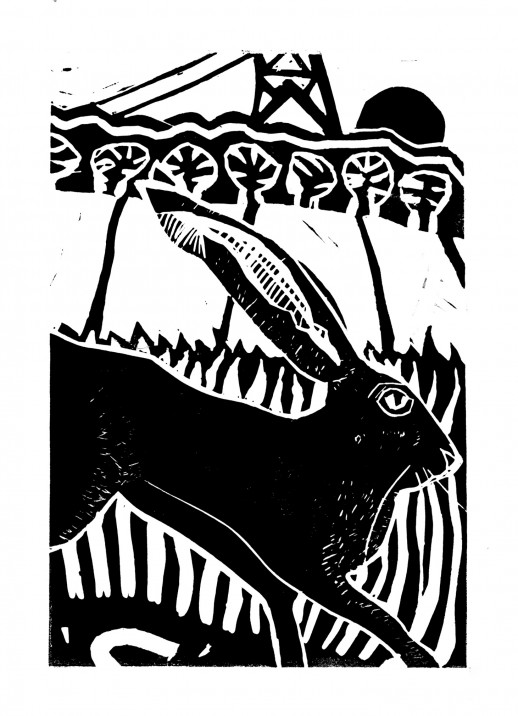
Not that I could have explained as much at the time. The fringes of towns were regarded as worthless, scrappy, litter-filled areas. The 1980s, hard-edged with modernity, eyes fixed on slick futures, were a triumph of ownership and boorish capitalism; the margins didn’t just fall through the gaps, they were the gaps. At best they were work-shy and unrealised. At worst, dangerous. Parents warned of tetanus-carrying beer cans, used condoms and addicts’ needles. If you believed what teachers told you, every pond teemed with Weil’s disease and every wood held a resident paedophile. Perhaps because of the proliferation of these myths, mine was the last generation to lay claim to the edges in a meaningful sense. A great societal shift indoors was already in motion. When the first of my friends got a VHS player and TV in his bedroom, lines of us sat cross-legged in wordless rapture; it was as though God had materialised on his chest of drawers. Watching Star Wars for the first time was as altering and exciting to young minds as voyaging into space itself. The borders between town and country soon became even emptier, trembling in the periphery of our vision, rarely coming into focus. A seam of silver birch here, a shock of wildflowers there – dimly remembered dreams glimpsed from passing cars and trains.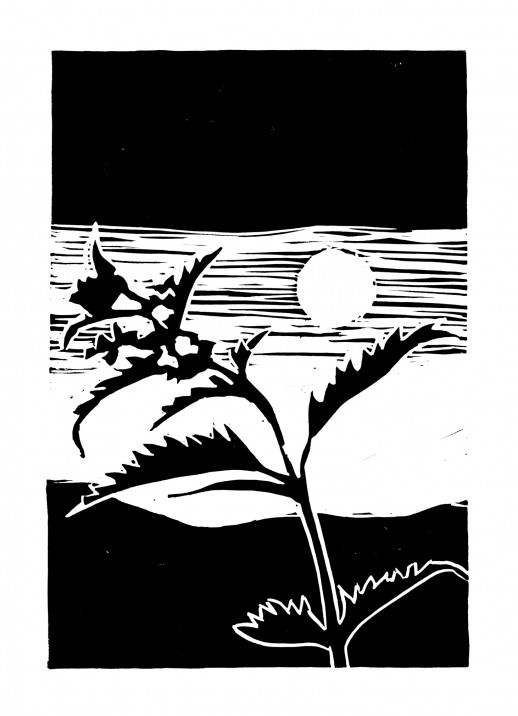
Of course, edges by their very nature are always being drawn and redrawn but a relentless force shapes the urban fringe. Developers had done for the places I loved by the last years of the 1980s – about the same time I began daily journeys into a city for school. Wood and bracken field crumpled and creased under bulldozers to be replaced by stacks of executive homes and double garages. Lawns were laid and the scrubland that had hidden dens tilled into river-rock flowerbeds. It was odd to watch the deconstruction of my childhood in such literal form. My connection to the fringes altered then too; the needle of my internal compass pointed to the exciting new worlds of adolescence. Once traced, however, these perimeters are never truly lost. They are only ever picked up and flexed. There are always edge-lands for those that seek them.
Common Ground will be out May 7 and can be pre-ordered in the Caught by the River shop.
